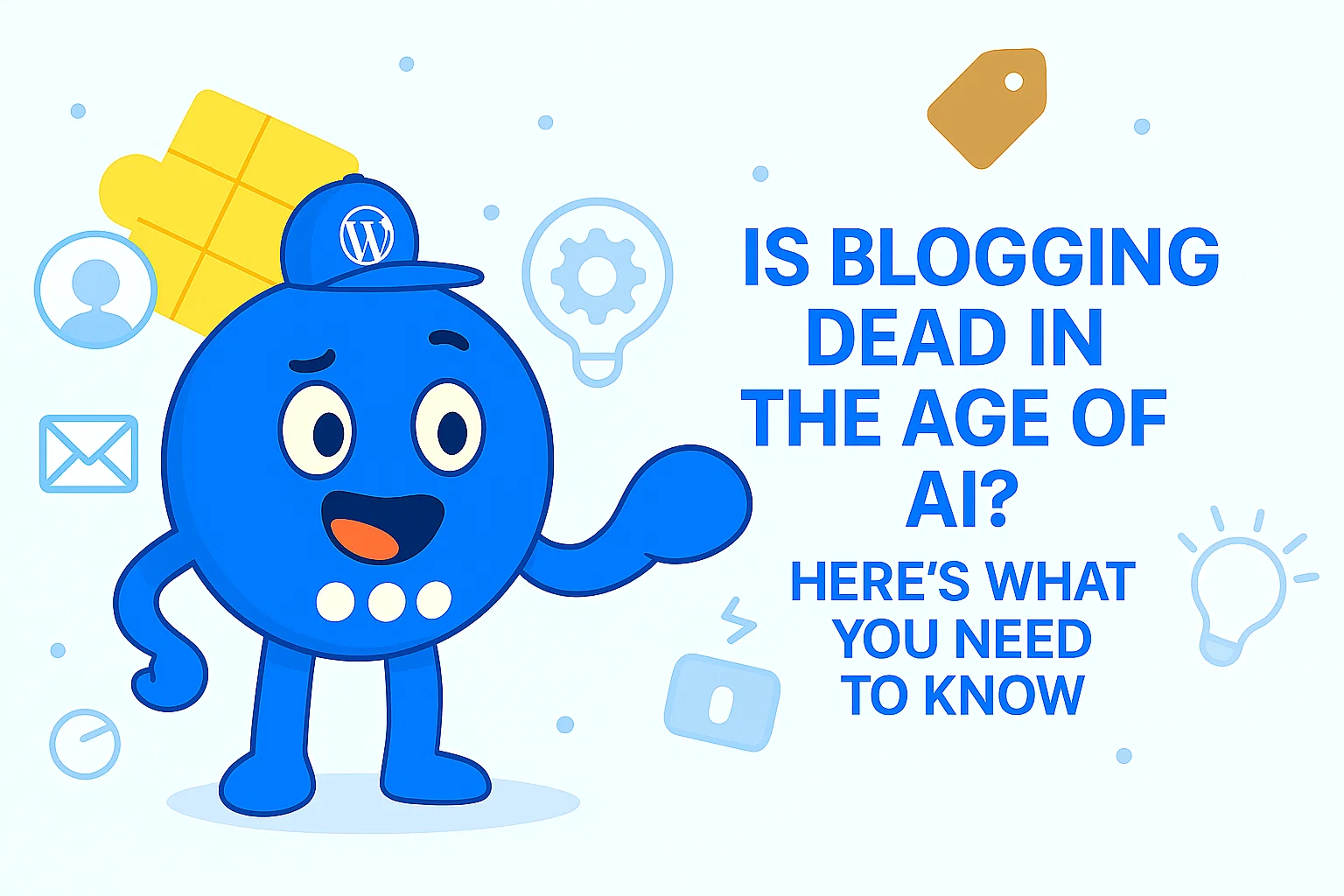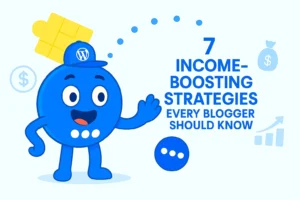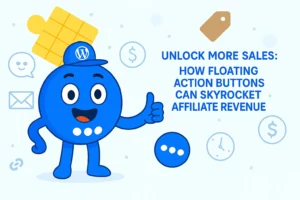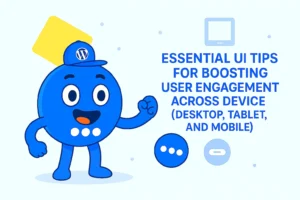Is Blogging Dead in the Age of AI? Here's What You Need to Know
In recent years, artificial intelligence (AI) has become an essential part of the digital landscape, transforming industries from healthcare to entertainment. One area that’s seen significant change is content creation, particularly blogging. Many people are asking: Is blogging dead in the age of AI?
With AI tools capable of generating articles, conducting research, and optimizing content, some worry that the traditional blog might become obsolete. However, there’s more to the story. While AI is undoubtedly changing the way we approach content, it’s not necessarily spelling the end for bloggers. In fact, the integration of AI could enhance blogging, creating opportunities for innovation rather than replacing the practice altogether.
In this article, we’ll explore how AI is impacting the world of blogging, whether blogging is still relevant in 2025, and how you can adapt to make your blog thrive in an AI-driven world.
The Evolution of Blogging

Blogging has come a long way since its inception in the early 2000s. Initially, blogs served as online diaries or personal journals, where individuals could share their thoughts and experiences. Over time, however, blogging evolved into a powerful medium for content creation and digital marketing.
The early days of blogging were dominated by a few passionate individuals writing for small audiences. As the internet grew, blogging expanded into a platform for businesses, influencers, and content creators to reach larger audiences. SEO (Search Engine Optimization) became a key element for success, and bloggers began to optimize their content for better visibility in search engine results.
In the following years, social media platforms like Facebook, Twitter, and Instagram also reshaped the blogging landscape. These platforms allowed bloggers to expand their reach beyond their own websites and connect directly with their audience. This shift created a more dynamic, interactive blogging experience.
Despite these changes, blogging continued to thrive as an essential form of content creation. It became a powerful tool for building brands, driving traffic to websites, and fostering communities. Today, successful blogs are often an integral part of a business’s digital strategy, supporting everything from customer acquisition to brand storytelling.
However, with the rise of AI tools that can generate content at scale, many are wondering if traditional blogging is becoming a thing of the past. Is the future of content creation entirely AI-driven?
The Role of AI in Content Creation

Artificial intelligence has been making waves in the content creation space. Tools powered by AI are now capable of generating articles, conducting keyword research, optimizing content for SEO, and even personalizing recommendations for readers. AI-driven platforms such as OpenAI’s ChatGPT have gained popularity among bloggers and marketers for their ability to streamline the content creation process and save time.
AI tools work by analyzing vast amounts of data and patterns from existing content across the internet. Using this information, they can generate relevant, human-like text that mimics the tone and style of well-written content. For bloggers, this means faster production times, lower costs, and the ability to scale content generation in a way that was once unimaginable.
Moreover, AI can assist with research, helping bloggers to gather insights, identify trends, and stay on top of industry developments. This can improve the overall quality of blog posts and ensure that content is not only timely but also relevant to the target audience.
However, there are some potential downsides to relying too heavily on AI in content creation. AI-generated content, while efficient, may lack the creativity, personal voice, and emotional connection that human writers bring to their work. It’s also possible for AI to generate content that’s formulaic, repetitive, or overly generic.
So, while AI can greatly enhance content production, it cannot replace the human touch that makes blogging so impactful. Blogs that have personality, authentic stories, and a unique perspective are still highly valued by readers, and they can’t be fully replicated by an AI system.
Is Blogging Really Dead?

The idea that blogging is dead in the age of AI is a common misconception. While it’s true that AI has transformed content creation, it hasn’t killed the practice of blogging; rather, it’s reshaping it.
One of the key arguments against the relevance of blogging in 2025 is the rise of AI-generated content. As more and more AI tools become available, businesses and individuals are utilizing them to generate articles at scale, often in just a fraction of the time it would take a human writer. This has led some to believe that blogging, as we know it, may become obsolete.
However, while AI can certainly produce content quickly, it lacks the nuanced creativity, unique perspective, and emotional depth that human bloggers bring to their work. For instance, AI struggles with creating truly engaging, compelling narratives or fostering a connection with the reader—something that skilled bloggers have mastered over time.
Additionally, readers crave content that feels personal and relatable. Blogs that tell personal stories, share authentic experiences, and present insights that only a human could provide will continue to thrive. While AI can assist in generating ideas or optimizing content, it’s the human touch that keeps readers coming back for more.
So, no, blogging is not dead. It’s evolving. Human bloggers are still in demand for their creativity, emotional intelligence, and the unique perspectives they bring to the table. The key is adapting to AI’s presence, using it as a tool to enhance blogging rather than viewing it as a threat.
How AI Can Actually Help Bloggers
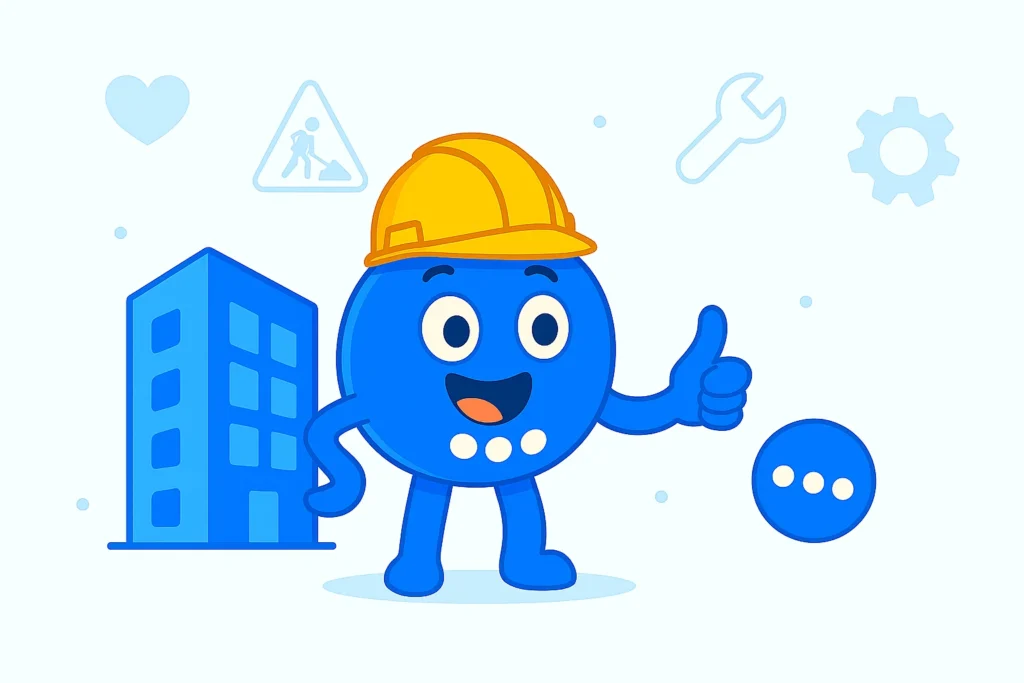
Rather than posing a threat to bloggers, AI can be an invaluable tool that enhances their content strategy and streamlines their workflow. By integrating AI tools, bloggers can work smarter, not harder, allowing them to focus more on creativity and less on the time-consuming aspects of content creation.
Here are a few ways that AI can assist bloggers:
- Content Ideas and Research: AI-powered platforms can analyze trending topics, keywords, and competitors’ content to suggest fresh ideas. Tools like AI-based topic generators or research assistants can provide a foundation for your blog posts, saving you hours of brainstorming and research time.
- SEO Optimization: SEO remains crucial for blogging success, and AI can help with that. AI tools can analyze your content, recommend SEO-friendly keywords, and even suggest ways to improve your headlines and meta descriptions. This helps boost visibility in search engine results, driving more traffic to your blog.
- Content Editing and Proofreading: AI-powered editing tools like Grammarly can help with grammar, punctuation, and style, ensuring that your blog posts are polished and professional. These tools can even suggest improvements to enhance readability, helping you create content that’s both engaging and error-free.
- Personalization: AI can help tailor content to individual readers’ preferences by analyzing their behavior and suggesting articles or products that might interest them. This level of personalization keeps readers engaged and can increase conversions on your site.
In essence, AI is not here to replace bloggers, but rather to support and empower them. By embracing AI, bloggers can enhance their efficiency, improve content quality, and optimize their blog strategy—all while still preserving the essential human elements that make their content unique and engaging.
The Future of Blogging in an AI World
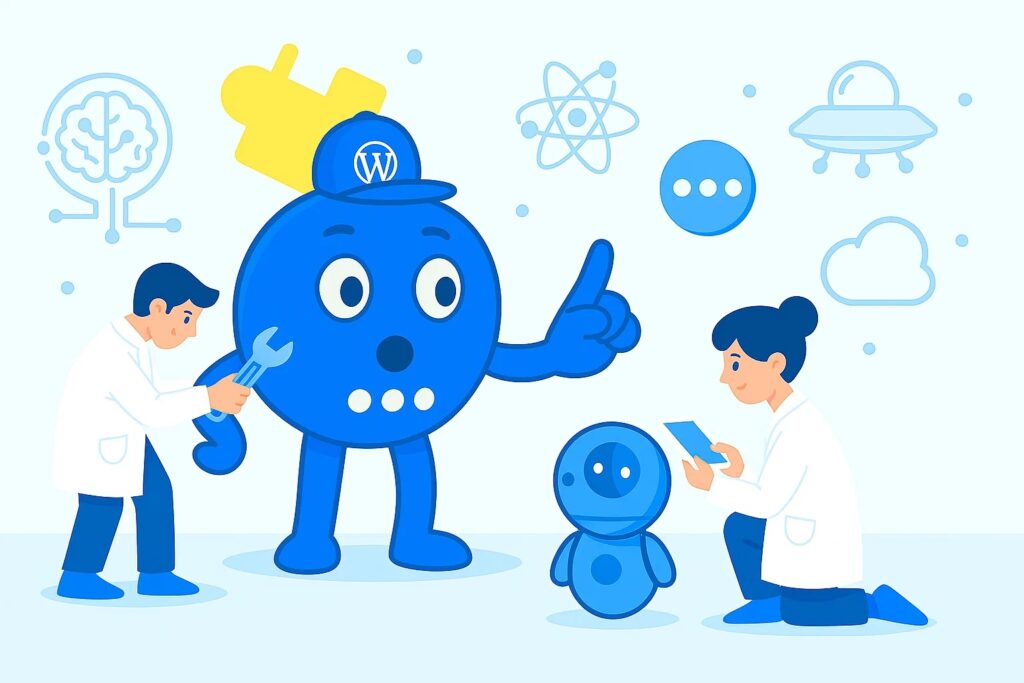
So, what does the future of blogging look like in an age dominated by AI? Contrary to the belief that AI will replace bloggers, the future of blogging appears to be a hybrid model where AI and human creativity coexist, complementing each other.
As AI continues to evolve, we can expect it to play an even bigger role in content creation, especially in terms of efficiency and productivity. However, the unique human qualities that bloggers bring—such as storytelling, emotional depth, and personal perspective—will remain highly valued. The future of blogging won’t be about choosing between AI or human content; it will be about finding ways to combine the strengths of both.
Here are some key trends to watch for in the future of blogging:
- Hybrid Content Creation: We’re already seeing the rise of hybrid content, where AI helps with research, optimization, and even content drafting, but human bloggers still add the personal touch, creative flair, and final editing. This collaboration will become more commonplace as AI tools continue to improve.
- Voice Search Optimization: As voice assistants like Siri, Alexa, and Google Assistant become more integrated into daily life, blogging will need to adapt. AI can assist in optimizing content for voice search, helping blogs rank higher in search results when people ask questions through voice commands.
- Data-Driven Insights: AI can also help bloggers understand their audience better by analyzing data and providing insights into what readers want. By leveraging AI tools to track engagement, demographics, and behavior, bloggers can create more targeted content that resonates with their audience.
- Increased Interactivity: With the help of AI, bloggers will be able to offer more interactive experiences on their sites. AI-powered chatbots, quizzes, and personalized recommendations will create more engaging experiences for readers, making blogs feel like an interactive community rather than a static source of information.
- Focus on Quality, Not Quantity: As AI takes over more of the repetitive and technical aspects of blogging, human bloggers can focus on delivering high-quality content that resonates with their audience. Blogging will become less about churning out posts and more about creating thoughtful, in-depth articles that offer real value to readers.
In conclusion, the future of blogging is bright. AI will enhance blogging practices, but it won’t replace the human element that makes blogs truly unique. Bloggers who embrace AI as a tool, rather than a threat, will continue to thrive in this new era of content creation.
How to Leverage AI in Your Blog Strategy

Integrating AI into your blogging strategy doesn’t have to be complicated or overwhelming. There are many tools and plugins available that make it easy for bloggers to enhance their content, improve user experience, and streamline their workflow. Here are a few practical tips to help you leverage AI effectively:
- Use AI for Content Generation and Ideation:
Start by using AI tools like OpenAI’s ChatGPT to generate content ideas, outlines, or even complete articles. These tools can assist in speeding up the writing process, but remember to add your unique voice and perspective to ensure the content resonates with your audience. - Optimize Content with AI-Powered SEO Tools:
SEO is essential for driving traffic to your blog, and AI can help you get ahead. Use AI-powered SEO tools like SurferSEO or Clearscope to analyze your content and suggest optimizations. These tools will recommend the best keywords, headings, and structure for your posts to improve search engine rankings. - Personalize the Reader Experience:
AI can help you better understand your audience and personalize their experience on your site. Tools like chatbots or AI-powered recommendation systems can suggest relevant articles, products, or services based on the reader’s preferences. This will keep your audience engaged and encourage them to explore more of your content. - Automate Time-Consuming Tasks:
AI can automate repetitive tasks like editing, proofreading, and content formatting. Use tools like Grammarly or Hemingway Editor to catch grammar mistakes and improve readability, allowing you to focus on the creative aspects of blogging. Additionally, AI-driven analytics tools can track your blog’s performance, providing insights on what’s working and where improvements can be made.
By incorporating AI into your blog strategy, you can significantly enhance your productivity, improve content quality, and boost audience engagement—all without losing the unique human touch that makes your blog special. Remember, the key is to view AI as an assistant, not a replacement. Use it to complement your creativity and elevate your blog to new heights.
How to Increase Blog Engagement in The Age of AI

In the fast-paced world of AI-driven content creation, capturing and retaining the attention of your audience is more challenging than ever. AI can help you generate and optimize content, but without genuine engagement, your blog risks blending into the noise. The key to standing out in an AI-dominated world lies in creating meaningful, interactive experiences that resonate with your readers and encourage them to stay connected with your content.
Blog engagement isn’t just about publishing articles; it’s about fostering an ongoing relationship with your audience. Whether it’s through comments, social sharing, or other interactive elements, the more engaged your readers are, the more likely they are to return and become loyal followers or customers. While AI is transforming content creation, it cannot replace the essential human connection needed for effective engagement. This is where the right tools, like the Floating Awesome Button (FAB) plugin, come in.
How to Boost Engagement in the Age of AI
- Create Interactive Experiences
AI can optimize content, but to truly engage readers, you need to offer more than just well-written articles. Interactive elements such as polls, quizzes, comment sections, and live chats help encourage readers to participate, share opinions, and feel more involved in the conversation. These features allow you to actively engage your audience, turning passive readers into active participants.
FAB’s Role: The Floating Awesome Button (FAB) plugin makes it easy to incorporate interactive features without needing any technical expertise. With FAB, you can add floating buttons that remain visible as visitors scroll, prompting them to take action—whether that’s signing up for a newsletter, returning to the top of the page, or contacting you directly. These simple, one-click actions significantly increase interaction and user retention. - Personalize the User Experience
AI tools allow you to collect valuable data on your audience’s preferences and behaviors. By using AI-powered insights, you can tailor your content recommendations to specific segments of your audience. Personalization makes readers feel valued, as they see content that aligns with their interests and needs.
FAB’s Role: FAB enables you to design popups, buttons, and notifications that can be customized based on user behavior. For example, if a user has spent a significant amount of time reading a specific topic, FAB can trigger a popup suggesting related articles or an offer, increasing their time on your site and boosting engagement. - Optimize for Seamless Navigation
Engagement also depends on how easily users can navigate your site. If visitors have trouble finding what they’re looking for, they’re more likely to leave. AI can help optimize your content for SEO, but user-friendly navigation is also key to keeping readers engaged.
FAB’s Role: FAB helps improve navigation by adding easily accessible floating buttons for returning to the top of the page or for quick access to other parts of your blog. This simple addition can make your site feel more intuitive and keep readers moving through your content without frustration, enhancing their overall experience. - Leverage AI-Driven Insights for Content Optimization
AI tools can analyze your audience’s behavior, content trends, and engagement patterns to help you create more targeted content. By understanding what resonates with your readers, you can craft blog posts that are more likely to be shared, commented on, and revisited.
FAB’s Role: As you implement AI-driven content insights, FAB can help you keep your audience engaged with attention-grabbing popups and sticky elements that remind them of new or popular content. This ensures that your most valuable posts are always front and center, increasing visibility and interaction. - Encourage Social Sharing and Interaction
One of the best ways to increase blog engagement is by encouraging your readers to share your content on social media. AI tools can help optimize your content for sharing by suggesting headlines, images, and hashtags that are most likely to go viral.
FAB’s Role: FAB allows you to add social media sharing buttons that float on the page, making it easy for readers to share your posts with their networks. By making it effortless for users to share your content, you increase its reach, driving more traffic to your blog and creating more engagement.
Product-Led SEO in the Age of AI
As search engines become increasingly sophisticated, the focus of SEO is shifting. Traditional SEO methods, which primarily rely on keyword optimization and backlinks, are being enhanced by new strategies such as Product-Led SEO. This approach is designed to drive organic traffic by focusing on the value and relevance of the content itself, rather than just optimizing for rankings. In the age of AI, where content is generated faster and more efficiently, standing out requires delivering genuine value to your audience.
What is Product-Led SEO?
Product-Led SEO is about aligning your SEO efforts with the user experience and the products or services you offer. Instead of simply ranking for general keywords, the goal is to create high-quality content that speaks directly to the problems your audience is trying to solve. This strategy focuses on user intent, ensuring that your content not only ranks well but also converts visitors into customers.
How Product-Led SEO Works in the AI Era:
AI can help with product-led SEO by providing insights into what your target audience is searching for, the types of content that engage them, and the keywords that are driving traffic. Tools powered by AI can analyze search data, track user behavior, and even predict trends that may help you stay ahead of the competition. By combining AI-driven analytics with a product-focused SEO strategy, you can create content that resonates with your audience and encourages them to engage with your products or services.
Conclusion
In the age of artificial intelligence, many are asking: Is blogging dead? The short answer is no. In fact, blogging is very much alive and thriving—though it’s evolving. AI is transforming the way we create and consume content, but it cannot replace the human creativity, emotional intelligence, and personal storytelling that define great blogs.
Rather than seeing AI as a threat to blogging, it’s important to view it as an invaluable tool that can enhance your blog strategy. AI helps streamline processes, optimize content, and improve user experience, allowing bloggers to focus on what they do best: creating engaging, thoughtful, and authentic content.
Blogging in 2025 will be about leveraging AI to enhance productivity, optimize SEO, and personalize experiences while maintaining the human element that makes blogs truly special. Bloggers who embrace these technologies and integrate them into their workflow will not only survive but thrive in the evolving digital landscape.
And while AI can provide assistance in many areas, tools like Floating Awesome Button (FAB) are perfect examples of how bloggers can use AI to improve engagement without sacrificing user experience. By making your website more interactive and user-friendly, FAB can help convert visitors into loyal followers or customers. It’s like having a digital assistant that works for you, making it easier for your visitors to take action and stay engaged with your content.
In conclusion, blogging is far from dead. With the right combination of creativity and technology, the future of blogging looks brighter than ever. So, embrace the power of AI, but never forget what makes blogging unique—the human touch.


